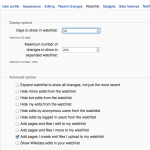It is that time of year where I am planning courses for the upcoming semester. I wanted to start from scratch again with this planning to make it more authentic (rooted in real-life context), more challenging (to my students), more collaboratively-driven, etc. I suppose to just make it better. So I am doing a few new things which I suspect I will post about as they are executed (or not).
The first one I wanted to try was inspired a bit by @congressedits, a nifty little tweetbot that tweets changes to Wikipedia coming from within the IP range of the US Congress (Senate and House of Representatives). I am not sure this was the first to do this sort of thing, but it certainly isn’t the last as others have sprouted up. I am not sure why Congress hasn’t figured out the concept of proxies, but it is good democratic, educational, and only occasionally alarming fun. So, their focus is location, edits coming from a particular place. Rather than try to determine the IP ranges of particular locations, I wanted to switch towards content and challenge students to reflect on information authenticity, reliability, transparency, etc. So, I would focus more on Wikipedia Watchlists. Watchlists are Wikipedia pages that, when edited, alert you to those changes. Easy enough.
So, it is a matter of following this process:
Since I teach Korean university students with a mix of Chinese, Japanese, Kazakhs, Uzbekis, Malays, Indonesians, North Koreans, along with some Europeans, I would want to organize topics according to their research interests. So I first do the following:
- I create a Google Drive form asking basic questions about name, email, and research interests
- I create a QR code corresponding to it
- I flash this in class on the first week
- All of this information is in a spreadsheet which I use to organize groups based on similar research interests. I generally keep these groups to four or less (as large groups seem to stifle the collaborative dynamic at this university)
- I ask them to identify contentious topics within their fields of research interest, identify the corresponding Wikipedia pages, and add those to their Watchlists.
- They then reflect quarterly (ever 4 weeks of the 16 week semester) on the changes, the validity of these changes, and the transparency involved in such changes. I ask them to support their agreement or disagreement with sources and citations.
- This reflection goes to their blog and everyone in the small group is asked to comment on each other’s posts.
- I give them 5-10 minutes every two weeks to discuss changes in class, but I want to foster in them a sense of independence so I encourage them to discuss outside of class (via Kakaotalk primarily, a hugely popular messaging application in Korea)
The topics themselves are the hardest part, as they would have to be fairly contentious to provide any grist for the old reflection/blogging mill. So, I urge them to create a fairly extensive watchlist to catch as much as possible. I ask them to make it as topical as possible. For Korean students focused on Korean Studies, Political Science, International Relations. or Korean History (along with translation, this is what my university is known for), this can be as easy as asking them to follow both Dokdo/Takeshima/Liancourt Rocks, a source of major friction between Korea and Japan.
What is nice about this activity is that it is less active in terms of researching, an almost automated solution for data or sources. It generates discussion by its very nature (being generally contentious), as well as forces a consideration of the authority of text, sources, etc. It forces a collaborative interpretation of what those changes mean, and it forces students to link evidence to support those changes. All in all, not a bad way to generate a minimum of four significant blog posts from students over the course of the semester.






[…] It is that time of year where I am planning courses for… […]